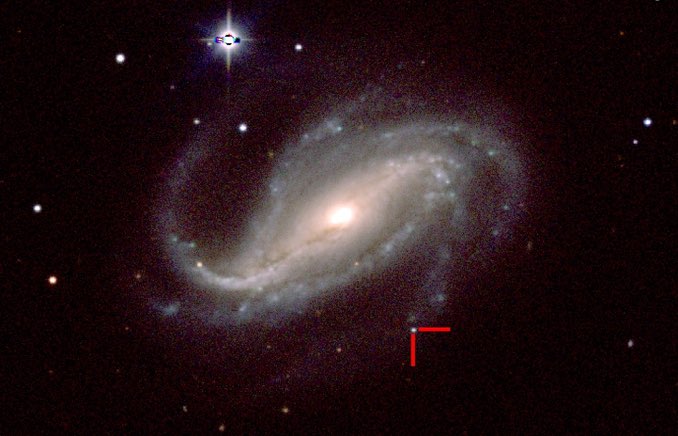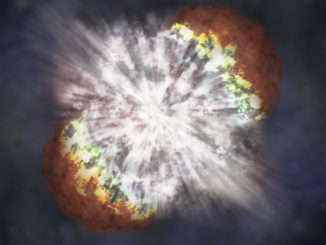
Eighty-five million years ago, in a galaxy far from Earth’s Milky Way, a massive star’s core suddenly ran out of fuel and collapsed, squeezing protons and electrons into neutrons and triggering a catastrophic explosion that sent a brilliant blast of light and radiation out in all directions. On 20 September, 2016, amateur astronomer Victor Buso, a locksmith in Rosario, Argentina, happened to be testing a new camera on his 16-inch telescope, snapping images of galaxy NGC 613, when the light from the supernova arrived. It was the first time anyone had ever captured the initial moments of the “shock breakout” from an optical supernova, one not associated with a gamma-ray or X-ray burst.
Buso examined his 20-second exposures right away and noticed a pinpoint of light near the end of a spiral arm that quickly brightened. He notified the International Astronomical Union, which alerted astronomers around the world. Astronomer Melina Bersten and colleagues at the Instituto de Astrofísica de La Plata in Argentina heard about the discovery and realized Buso had captured the first few minutes of a supernova outburst. Bersten said the odds of capturing that initial burst of light were 1 in 10 million, possibly as low as 1 in 100 million.

Buso had spotted a Type IIb supernova, the explosion of a star that initially was about 20 times more massive than the sun. By the time it exploded, the star had lost most of its hydrogen envelope, possibly stripped away by a companion sun. When the still-massive star ran out of nuclear fuel, the outward energy generated by fusion ground to a halt, gravity took over and the core collapsed, triggering a powerful shockwave. Buso’s images show the rapid increase in brightness predicted to occur when the shockwave reaches the surface and breaks free.
“Professional astronomers have long been searching for such an event,” said Alex Filippenko, an astronomer at the University of California at Berkeley who carried out extensive follow-up observations at the Lick and Keck observatories. “Observations of stars in the first moments they begin exploding provide information that cannot be directly obtained in any other way.”
Filippenko said Busa’s data “are exceptional. This is an outstanding example of a partnership between amateur and professional astronomers.” Buso’s discovery and observations from observatories around the world were published in the 21 February issue of the journal Nature.



